In 2015, Ben Snow discussed ILM‘s involvement in Avengers: Age of Ultron with us. He later went on to work on films such as The Great Wall, Mother!, Godmothered, and Dungeons & Dragons: Honor Among Thieves.
What was your feeling to be back in Oklahoma for this new Twister movie?
This was actually my first time in Oklahoma – I was back at ILM doing R&D on the EF1 and EF2 tornadoes on the first film during the shoot. But I had a great time in Oklahoma – the landscape is beautiful and the people were friendly and supportive of the shoot. And of course the skies are spectacular, as was the weather which meant we were shut down a few times by the very sort of extreme weather we were creating for the movie. The upside was that once when we got shut down the director and I got to go storm chasing with Kevin Kelleher, our meteorologist consultant. What a great experience that was!
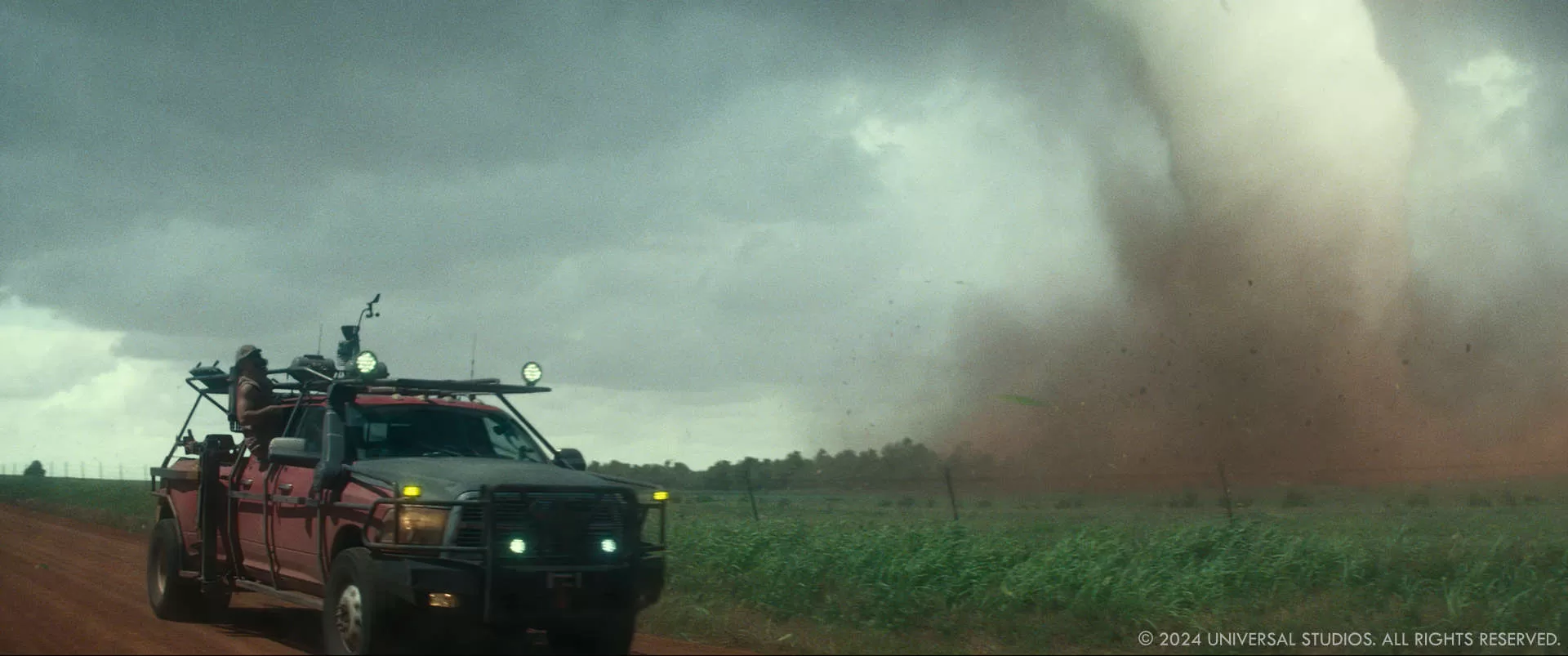
How did you organize the work with your VFX Producer?
Our producer Mark Soper and I broke down and bid the shots together and put together our team during pre-production, we also looked after the previs, which was led by James Willingham. James and his team at The Third Floor did a great job on the previs and postvis. During production Mark mainly held down the fort back in our LA office with Matthew Silver Schitkovitz looking after us in Oklahoma. Mark and Matthew put together a great production team.
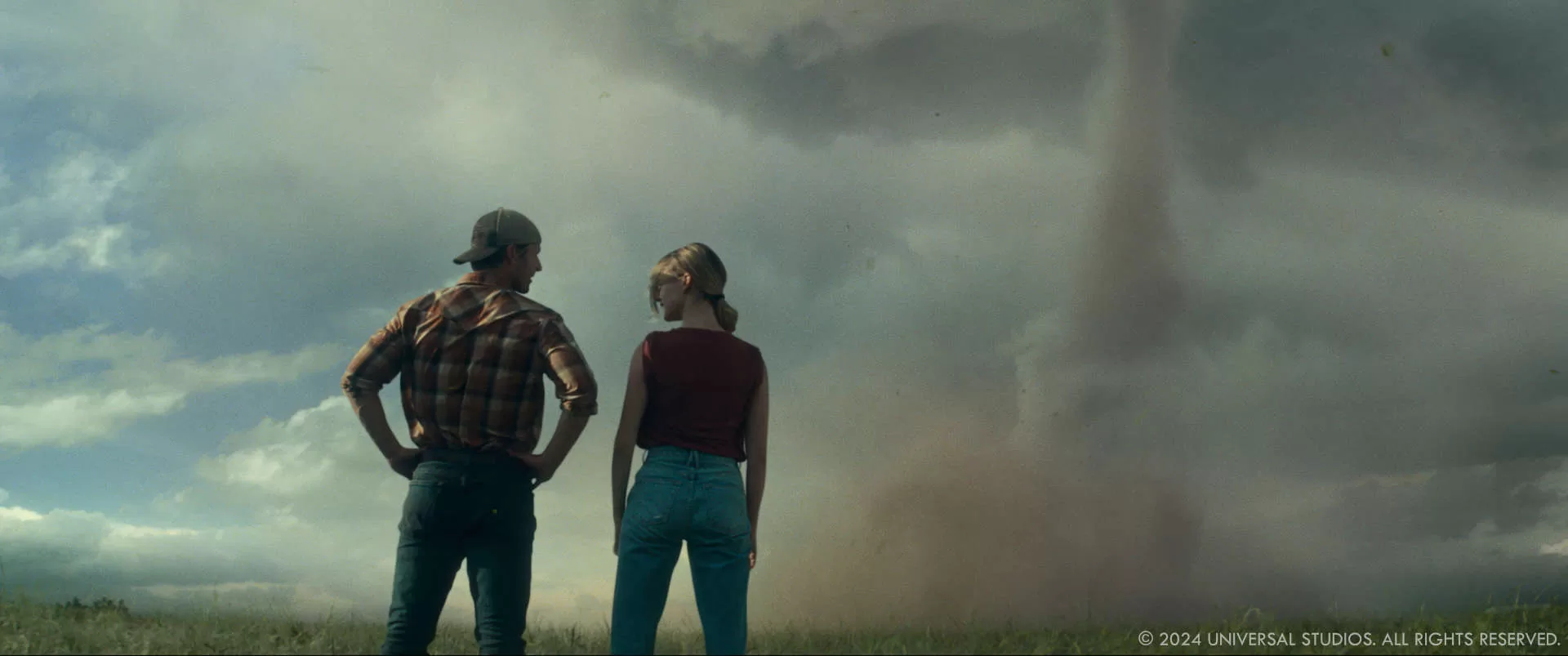
What is your role on set and how do you work with other departments?
My role on Twisters started with working with director Lee Isaac Chung, discussing the character and visuals on each of our Tornadoes. During pre-production we had several production meetings with all the Heads of Department to discuss how we were going to tackle the work. VFX is involved with everything, mostly closely working with the ADs on logistics, special effects on what will be practical on set versus added with computer graphics, art department on what they would create and what we’d need to enhance later, and second unit and stunts for discussing the action scenes. But at the same time we are working closely with editorial on the previz and post-vis and making sure we have everything we need, camera and grip on the bluescreens and lighting effects, props, makeup, picture cars, you name it.
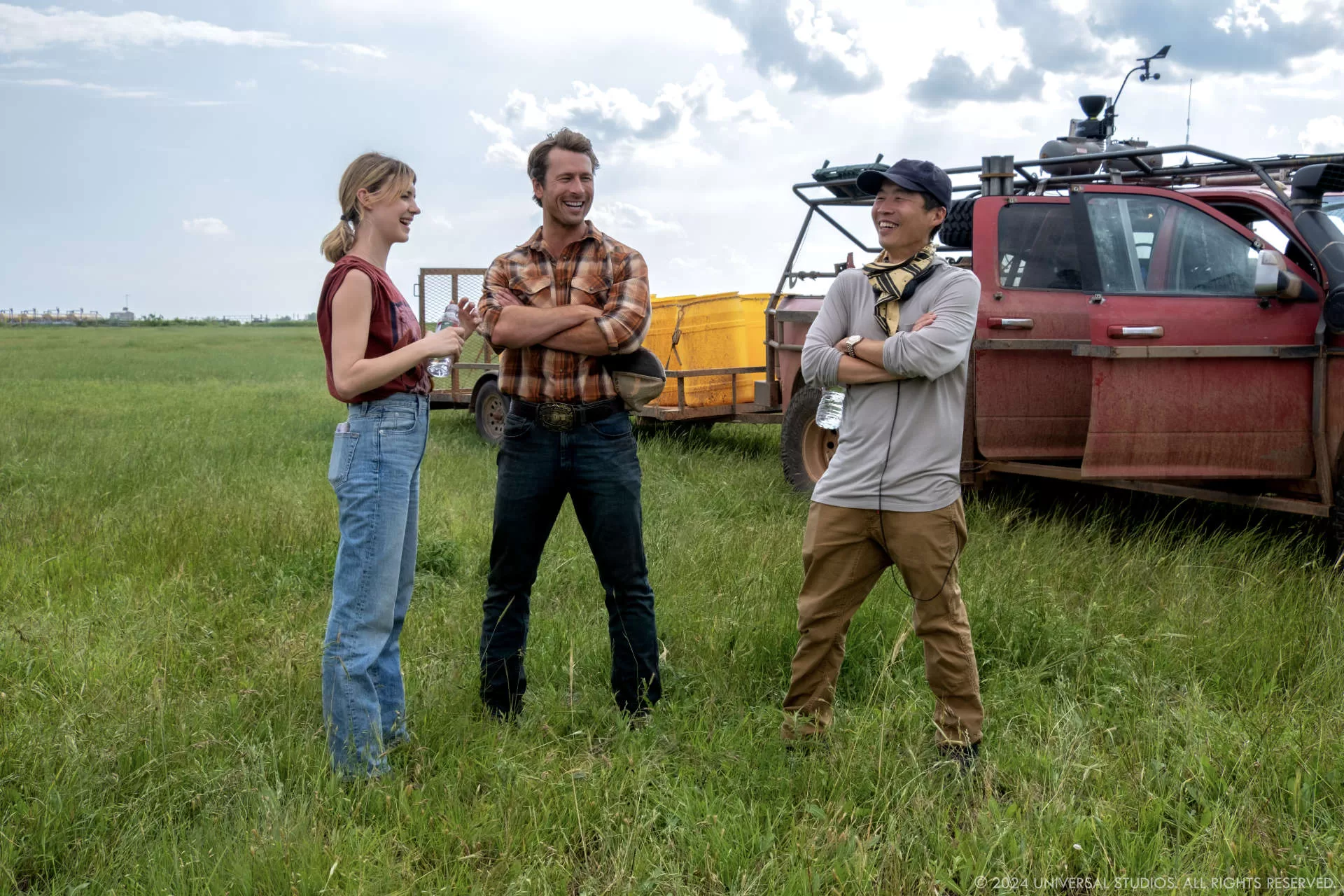
Can you discuss the collaboration process between the VFX team and the director?
The teams on Twisters were extremely collaborative. Director Lee Isaac Chung came into it having done a tremendous amount of research – talking to national weather service experts and our own meteorological consultants. He had hero references for tornadoes and certain action beats, and we used those as a basis for finding more references to discuss with him and as a visual goal as we started building the tornadoes. We worked closely with Isaac during the previz process, sometimes starting with storyboards he and the storyboard team created, but also often discussing the action and developing the sequence from scratch. During the pre-production and shooting we worked with him and the rest of the HODs to work out what would be efficient to shoot. All of our goals were to shoot as much on location for real as possible but with the extreme weather conditions it made more sense to shoot some of the action at the studio.
An example of the collaboration was a big single shot in the swimming pool of a motel as a twister approaches after a rodeo scene. We worked with Isaac and the A-camera operator, Geoff Bauman, on a rough plan of action and made an initial postvis. Then myself, Geoff and the ADs went to the set and shot a version on our phones to work out where the blends would take place and how we’d integrate the practical stunts and special effects. I did a rough initial edit for proof of concept and discussion with Isaac and this was refined by our editorial team and that gave us a blueprint for the shoot.
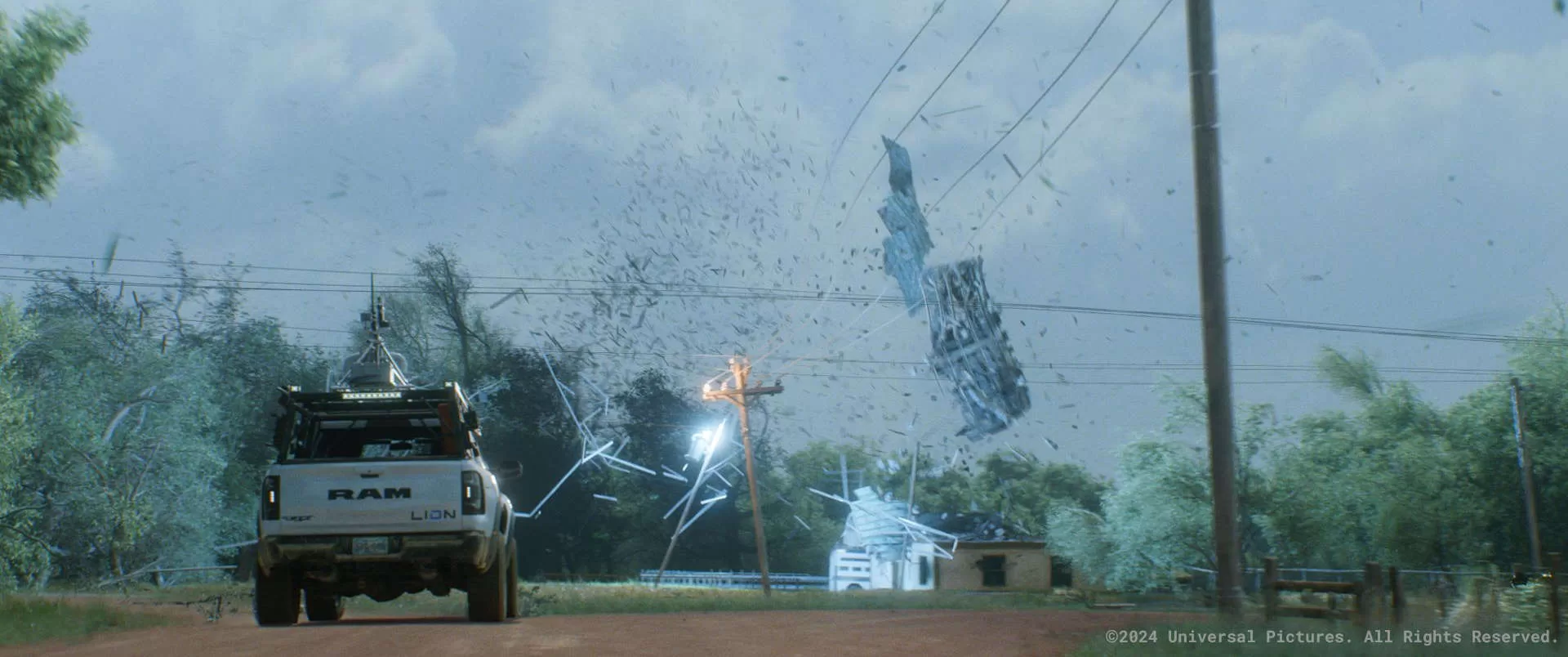
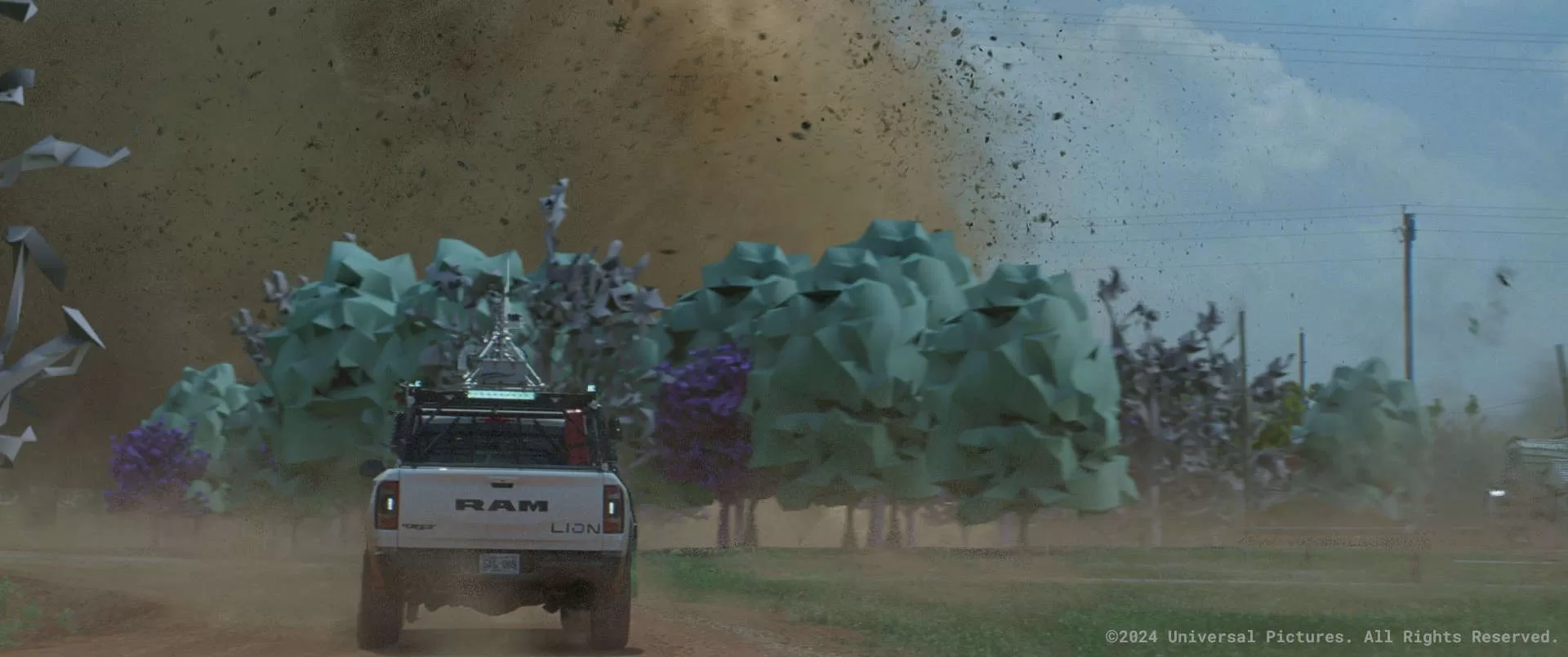
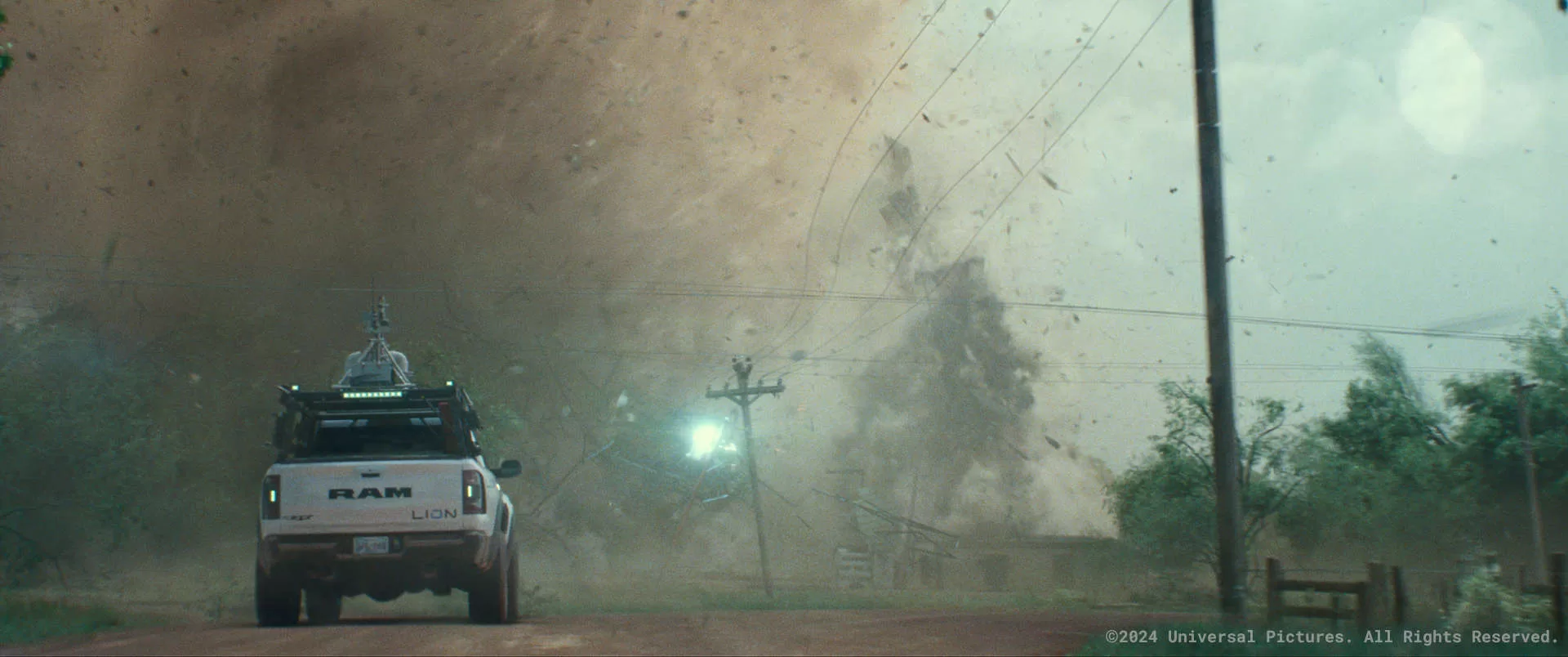
What were the main challenges in creating realistic tornado effects?
We have the advantage of much better software, more powerful computer systems, and, importantly, better reference than we had when we made the first film, Twister, in 1996, but the fact that reference is plentiful on YouTube and elsewhere also means that our modern audience knows a lot more about what tornadoes actually look like. So the challenge was to make our visuals realistic enough to make sure the audience was focussed on the action and story rather than if the tornadoes are real or not. Because the movie is realistic and doesn’t have a fantasy or science fiction aspect, there is nowhere to hide in the visual effects – everything needs to look real to match into the real world people are seeing – not just the tornado but the skies, set extensions, vehicles, debris, and destruction we were adding.
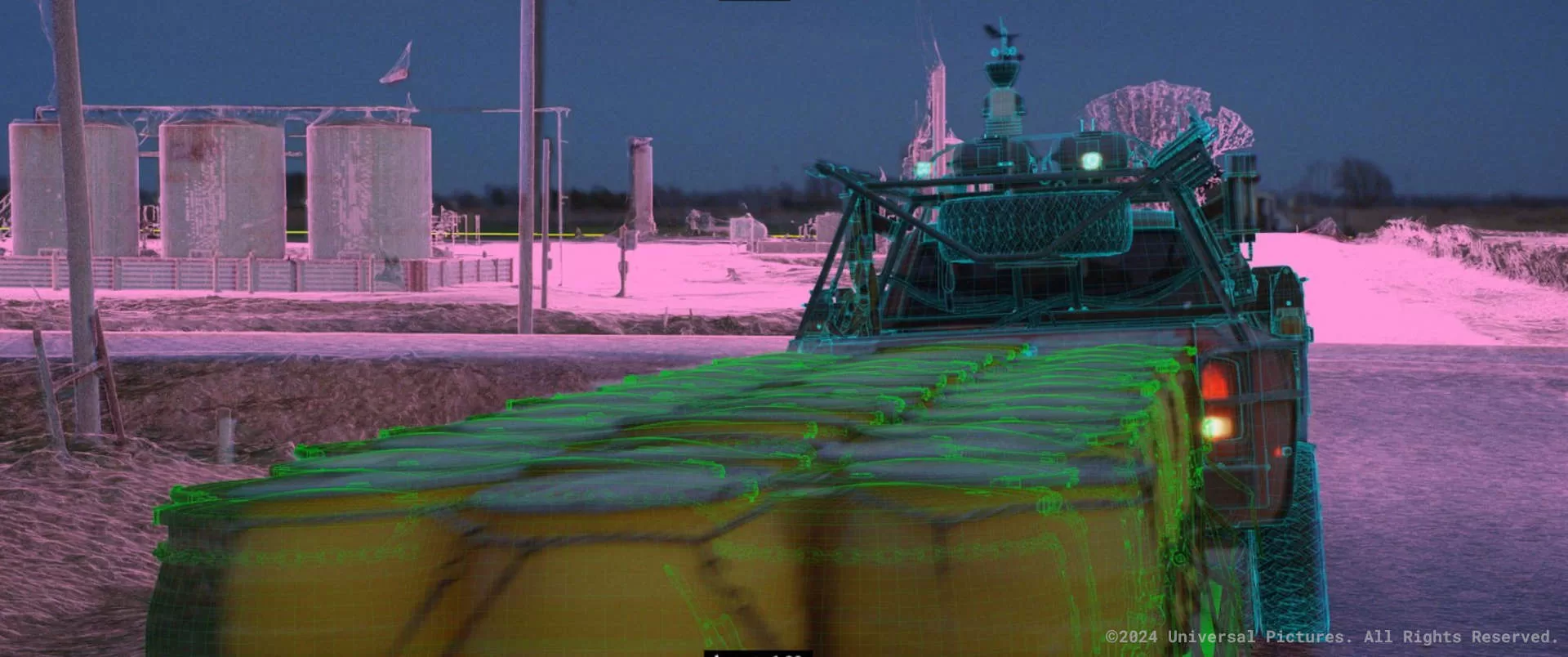
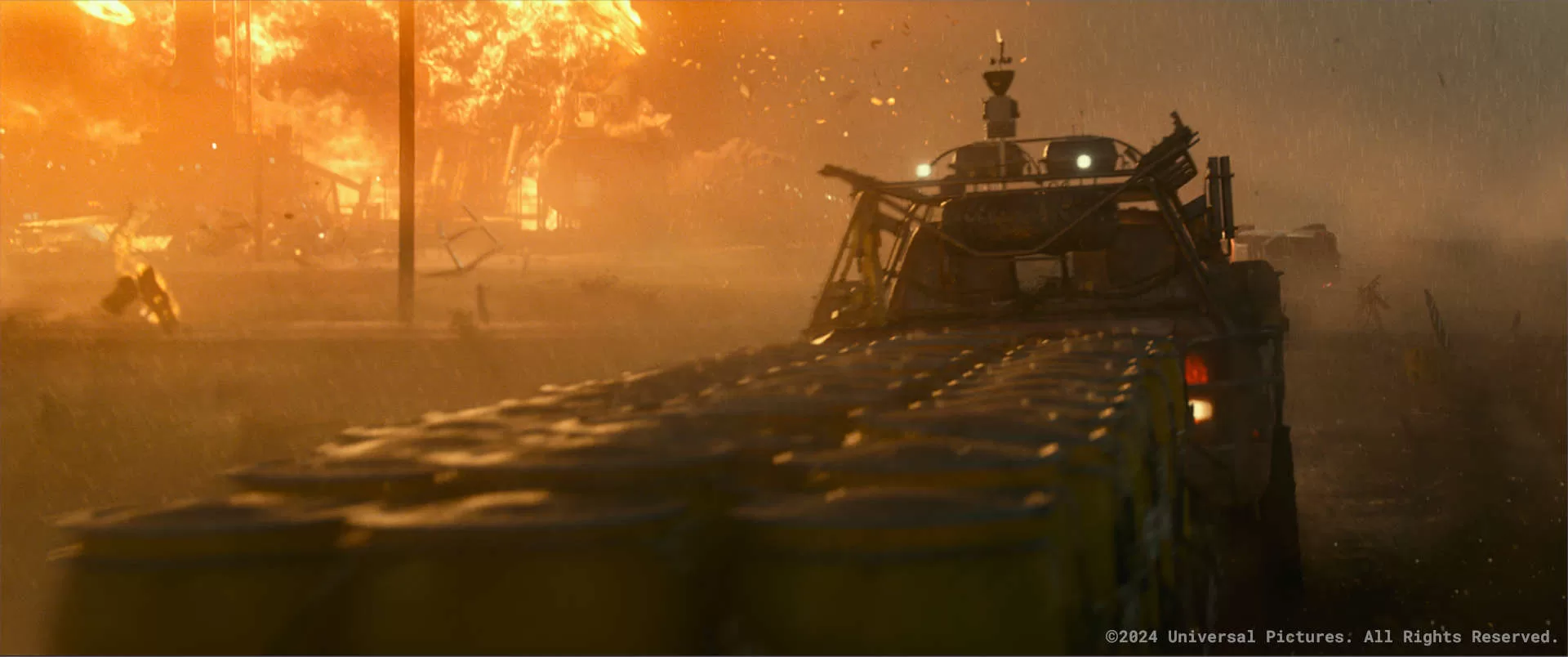
How have visual effects evolved since the original Twister movie?
We screened the movie for executive producer Steven Spielberg soon after we had a full assembly. We’d already made quite some headway on the visual effects and afterwards Steven remarked to me how far we’d come since we did the original, and we were working out how many years ago that was (he was shooting The Lost World: Jurassic Park while I was working on Twister, and The Lost World would be my next project). And it’s true that we’ve come a long way – we now have a much better knowledge of real storm dynamics, better references and much more powerful computers (and disk space to store our simulation and animation caches). But the care with which our VFX artists study what we see in the real world to make our weather look believable hasn’t changed, and we wanted to honor the care and attention to detail the VFX team had on the first Twister. Our goal was to leverage the knowledge and understanding we have now for how these weather systems form and operate and better toolsets to make our tornadoes as dynamic and exciting as in the first film, but with greater realism is only possible with the modern effects toolset we now have.
The sheer computing power we have at our disposal allows us to do stuff we couldn’t dream of doing when we made the first film. One of my shots on the original film was the tornado destroying a small barn – it’s a shot featured on one of the posters. The funnel was a geometry patch with a surface material I wrote in Pixar’s RenderMan using layers of fractal noise to give it a cloudy surface and soft edge. The clouds were spheres with a similar texture just lots of them put together and animating. The debris field of dust at the bottom of the tornado was a big particle system driven via a Dynamation clip effect created by CG supervisors Habib Zargapour and Henry Labounta with help from Chris White. For the barn destruction we made the shell of the barn in pieces, and put those pieces through a simulation by representing each one by a single particle, then using RenderMan shaders to make them look like they were deforming. It was all quite clever and unlike anything that had been attempted at the time.
By contrast, in the new movie, as the characters flee a tornado by reversing down a country lane we see another agricultural building destroyed and it’s substantially more complex. The tornado is using a suite of sophisticated fluid dynamics tools using Industrial Light & Magic’s proprietary Pyro toolset, which has been developed over recent years and which gives us the ability to handle simulations with incredible complexity and massive data sets. The building is built in architectural layers, not just the shell and supports we were able to generate for the first film. Structures gets broken apart in pieces and smaller and smaller fragments that can be controlled during the shattering process. The lightning is now properly ray traced and shadowed. The great references we have now show all the complexity of the destruction – we have layers of insulation, white dust from sheetrock being ripped from wall studs and torn apart, pipes, and other building materials and even dust from the walls – so the destruction looks more realistic. On top of that our environment team can create photorealistic trees, grass, and foliage that we can affect with the wind so when we have to replace all the vegetation in the shot with wildly blowing trees. All that visual complexity simply wasn’t possible with the toolset we had back in the mid-90s on the first film but it makes for a more believable and frankly more terrifying shot in the new film.
What lessons from the original Twister influenced the VFX strategy for this sequel?
We tried to honor the legacy of the first one, and like the original, we shot as much as possible on real locations in Oklahoma. The first film was cursed with fine, sunny weather and we had to do a fair amount of sun suppression and similar on some of the sequences. On the new film we tried to lean into the weather we had where possible, and when we did have to adjust the weather, having a more powerful toolset allowed us to make hard calls about replacing as much of the scene as necessary to get a realistic result best suited to tell the story.
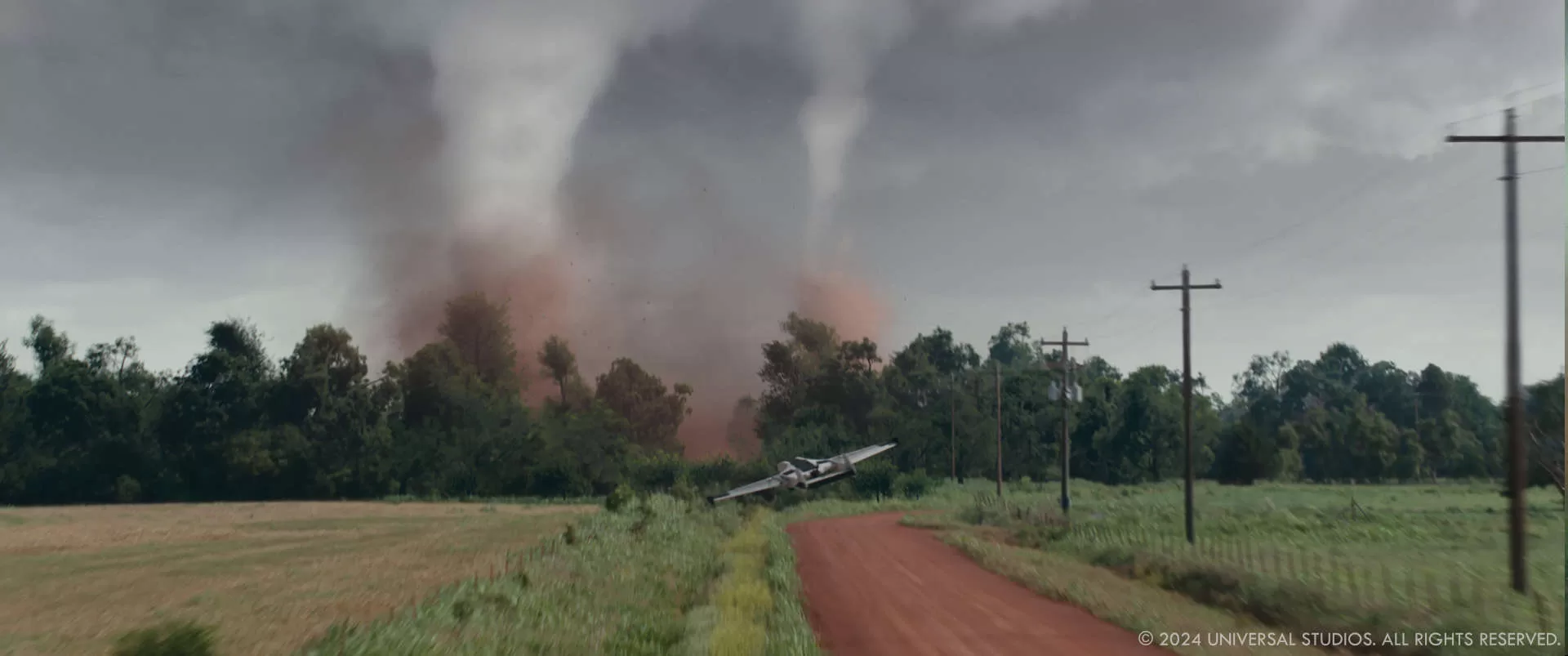
What was the most complex scene to create in terms of visual effects, and why?
With ten tornadoes to create there was no shortage of complex scenes in Twisters. Each one provided a unique set of challenges. That said, in one scene a tornado strikes a petroleum refinery which made for some unbelievably complex simulation work. Florian Witzel, the ILM Visual Effects Supervisor, and his team did outstanding work across the film but on this scene in particular they had to create a twister that becomes a ‘fire-nado’ – essentially a tornado made of fire, and it was terrifying. Researching how that type of facility is laid out and what chemicals might be stored onsite added to the realism we see in the final shot as massive explosions rock the landscape and our storm chasers flee the scene.

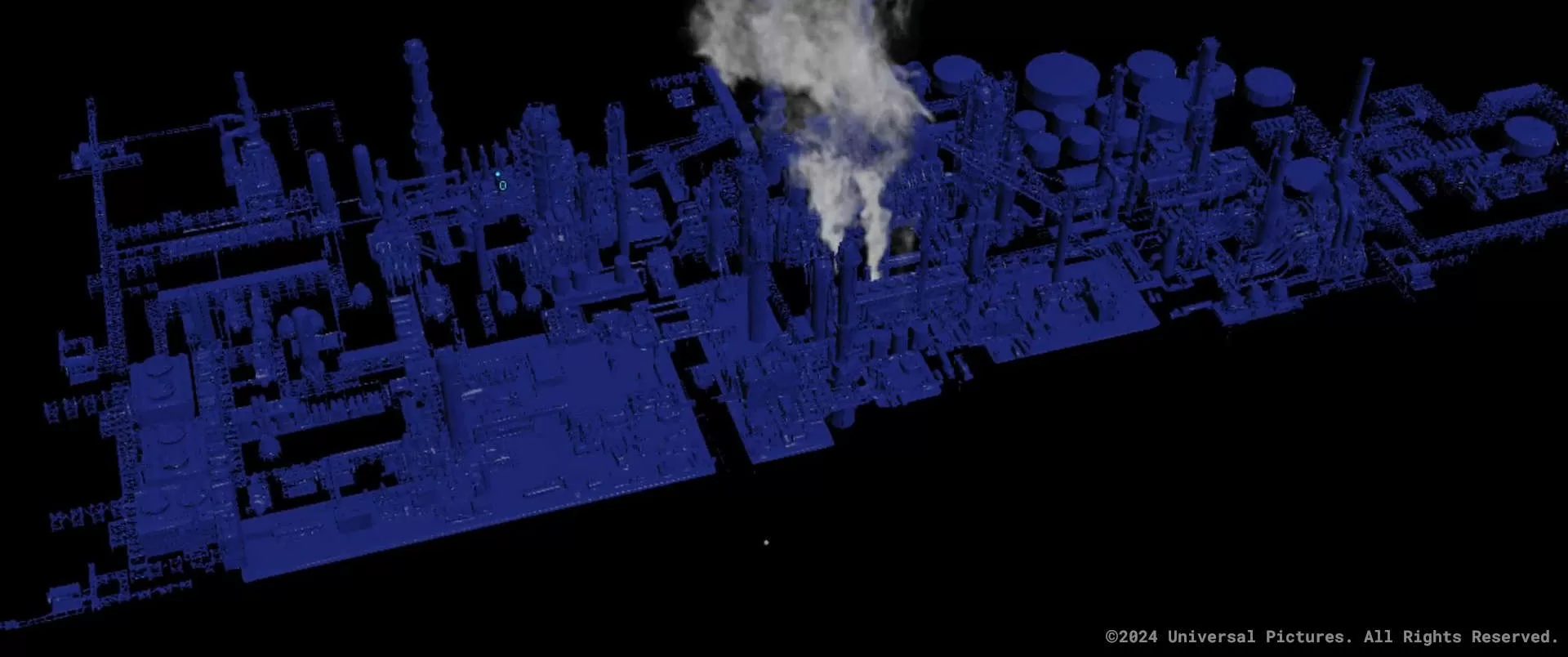
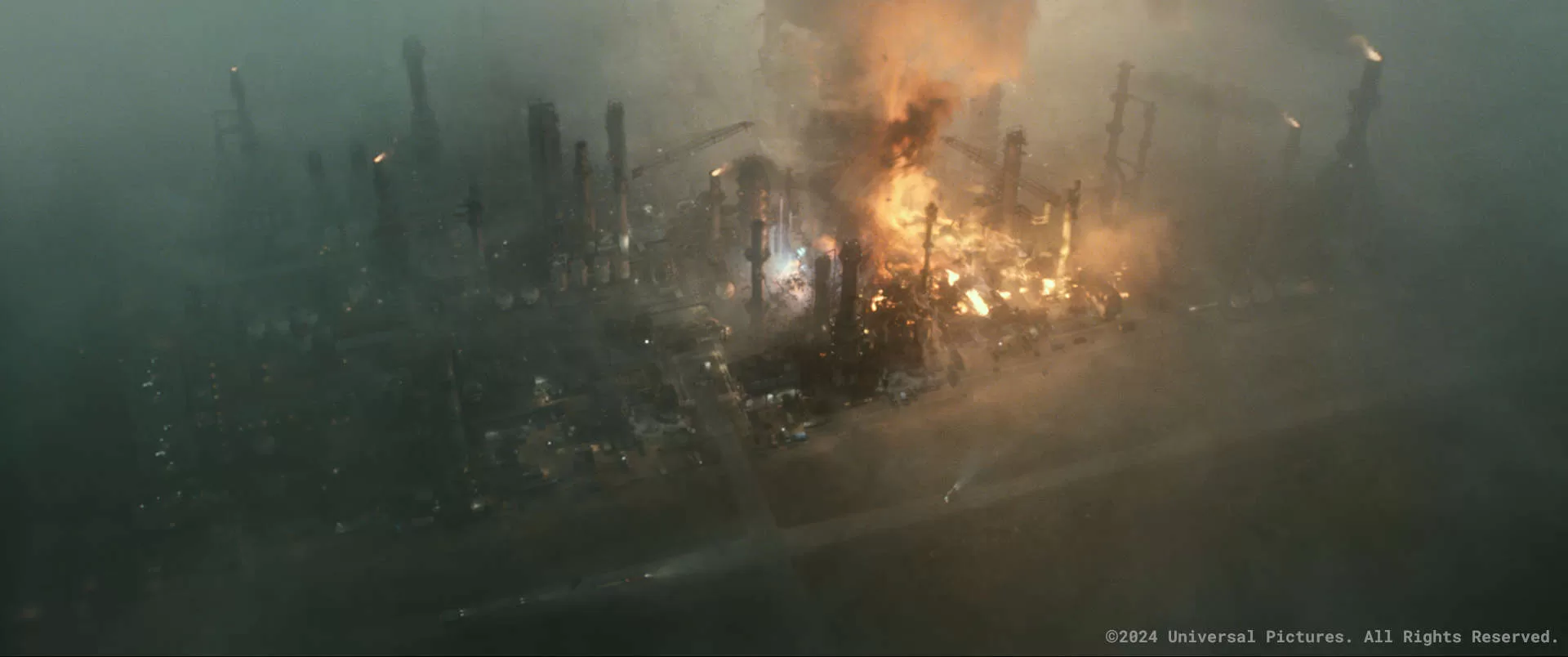
How did you simulate the destructive power of tornadoes on set?
Scott Fisher our Special Effect Supervisor and his team pulled out all of the stops on this film. They had massive jet engines that could safely create incredible sustained winds on set so the actors didn’t have to imagine what it would be like if they were caught in one of these storms, for all intents and purposes, they were in them. They worked out a variety of debris that could be blown past the camera and towards the actors safely to add realism to the scenes. Ice, hail and all manner of rain – from mist to full on torrential downpours – was available to Issac to create just the effect he was looking for. Scott’s team was incredible and such a fantastic partner to our visual effects team. We’d often confer about what his team could provide and when we’d augment with our computer graphics to make sure we got the best results.
All told it was a true partnership between Isaac, our amazing cast, each of the on set departments, and our visual effects artists and technicians all coming together to lovingly craft the scenes that allow this story to be told in such a compelling manner.
A big thanks for your time.
WANT TO KNOW MORE?
ILM: Dedicated page about Twisters on ILM website.
© Vincent Frei – The Art of VFX – 2024





Please release the vfx breakdown!!